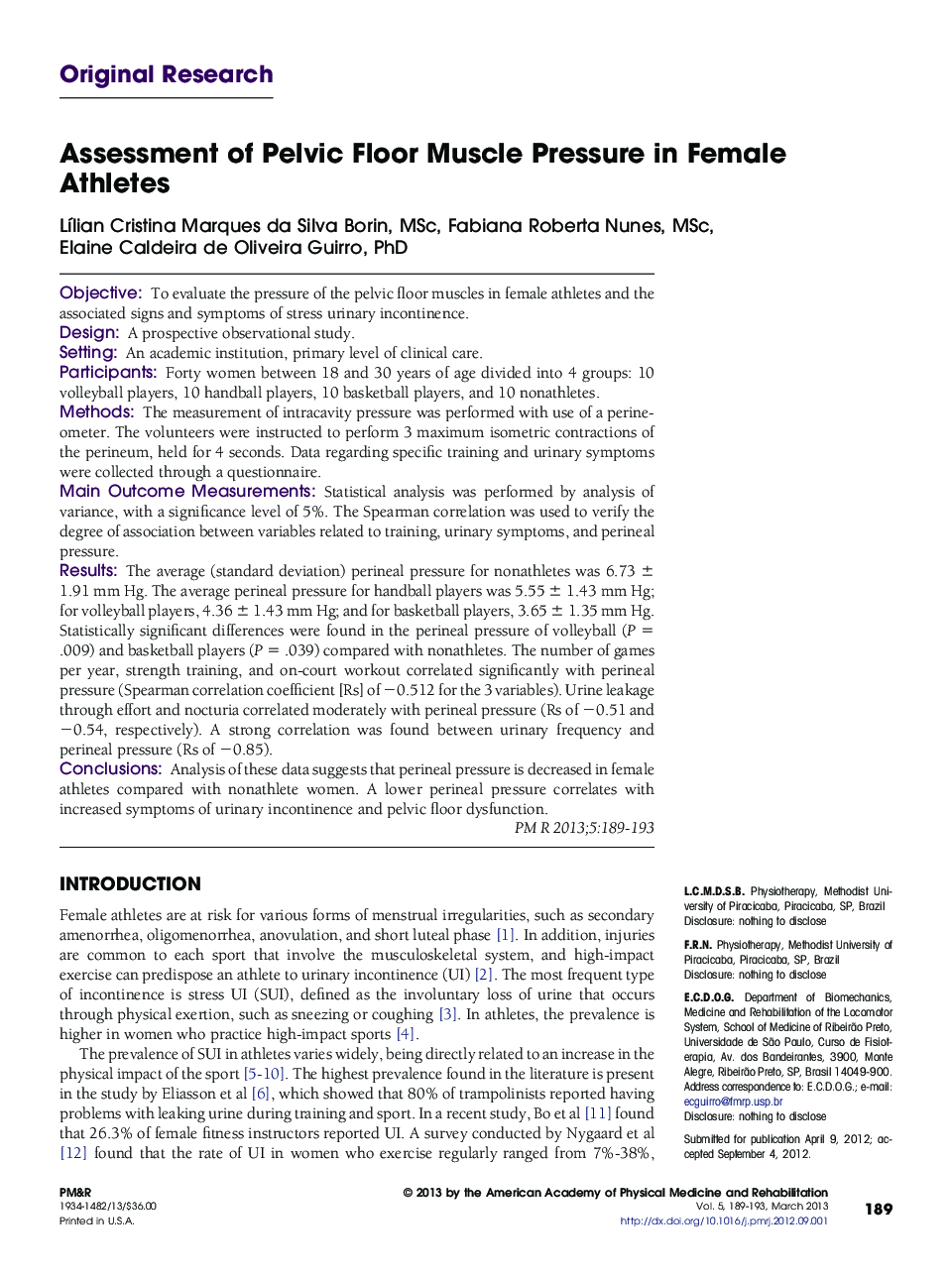| Article ID | Journal | Published Year | Pages | File Type |
|---|---|---|---|---|
| 2716259 | PM&R | 2013 | 5 Pages |
ObjectiveTo evaluate the pressure of the pelvic floor muscles in female athletes and the associated signs and symptoms of stress urinary incontinence.DesignA prospective observational study.SettingAn academic institution, primary level of clinical care.ParticipantsForty women between 18 and 30 years of age divided into 4 groups: 10 volleyball players, 10 handball players, 10 basketball players, and 10 nonathletes.MethodsThe measurement of intracavity pressure was performed with use of a perineometer. The volunteers were instructed to perform 3 maximum isometric contractions of the perineum, held for 4 seconds. Data regarding specific training and urinary symptoms were collected through a questionnaire.Main Outcome MeasurementsStatistical analysis was performed by analysis of variance, with a significance level of 5%. The Spearman correlation was used to verify the degree of association between variables related to training, urinary symptoms, and perineal pressure.ResultsThe average (standard deviation) perineal pressure for nonathletes was 6.73 ± 1.91 mm Hg. The average perineal pressure for handball players was 5.55 ± 1.43 mm Hg; for volleyball players, 4.36 ± 1.43 mm Hg; and for basketball players, 3.65 ± 1.35 mm Hg. Statistically significant differences were found in the perineal pressure of volleyball (P = .009) and basketball players (P = .039) compared with nonathletes. The number of games per year, strength training, and on-court workout correlated significantly with perineal pressure (Spearman correlation coefficient [Rs] of −0.512 for the 3 variables). Urine leakage through effort and nocturia correlated moderately with perineal pressure (Rs of −0.51 and −0.54, respectively). A strong correlation was found between urinary frequency and perineal pressure (Rs of −0.85).ConclusionsAnalysis of these data suggests that perineal pressure is decreased in female athletes compared with nonathlete women. A lower perineal pressure correlates with increased symptoms of urinary incontinence and pelvic floor dysfunction.
